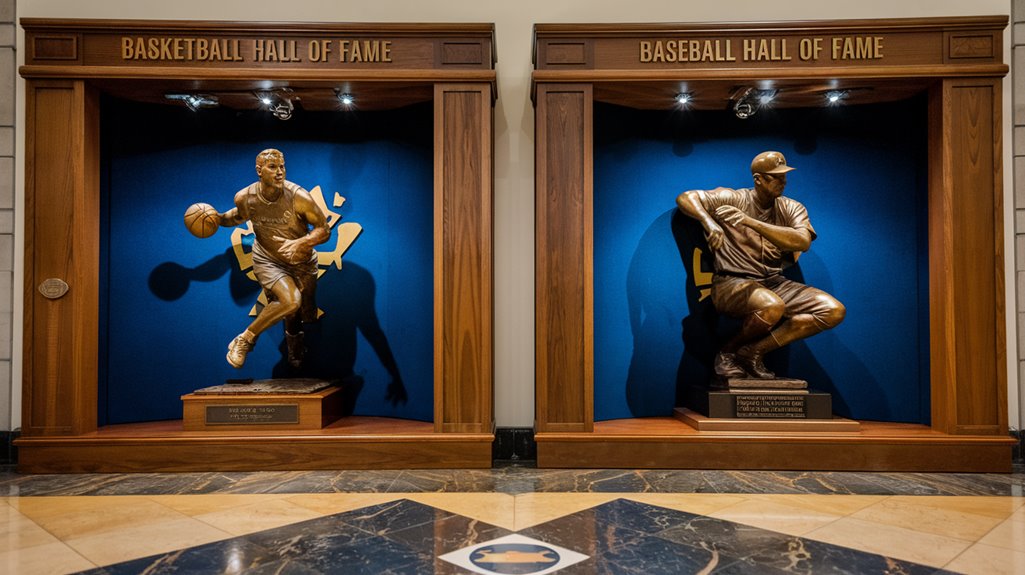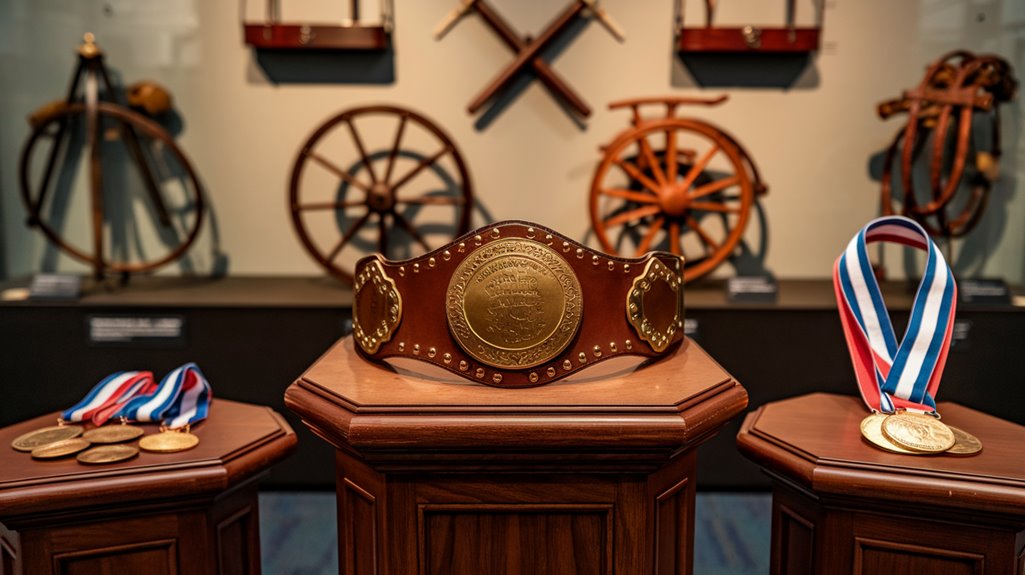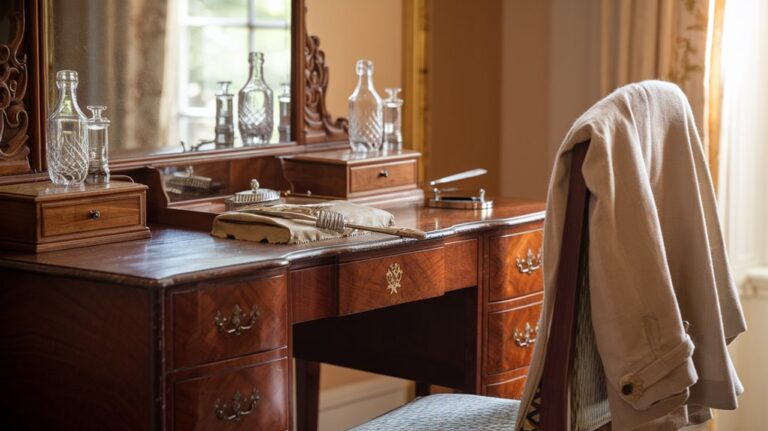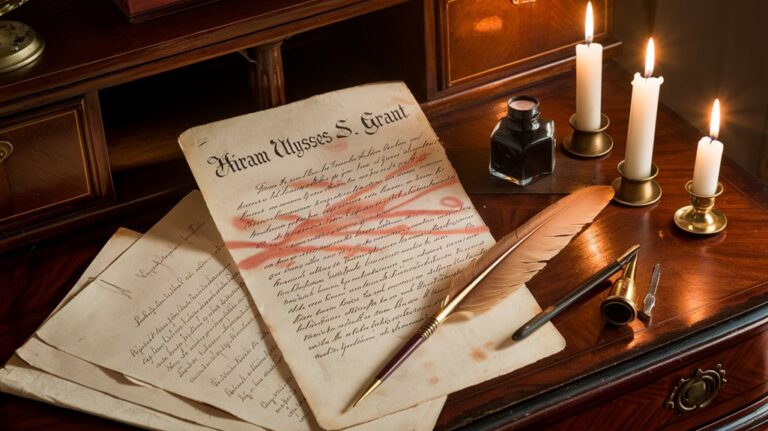Abraham Lincoln and Benjamin Franklin Are in Sports Halls of Fame
Like two stars that illuminate unexpected corners of history, you'll find Abraham Lincoln and Benjamin Franklin shining in places you'd never expect – the halls of athletic fame. You probably know them as the penny-faced president and the kite-flying founding father, but there's a fascinating physical side to these iconic leaders that's often overlooked. Their athletic achievements weren't just footnotes in history; they've earned these brilliant minds permanent places among America's sporting legends. Let's explore why.
The Unexpected Athletic Side of America's Leaders
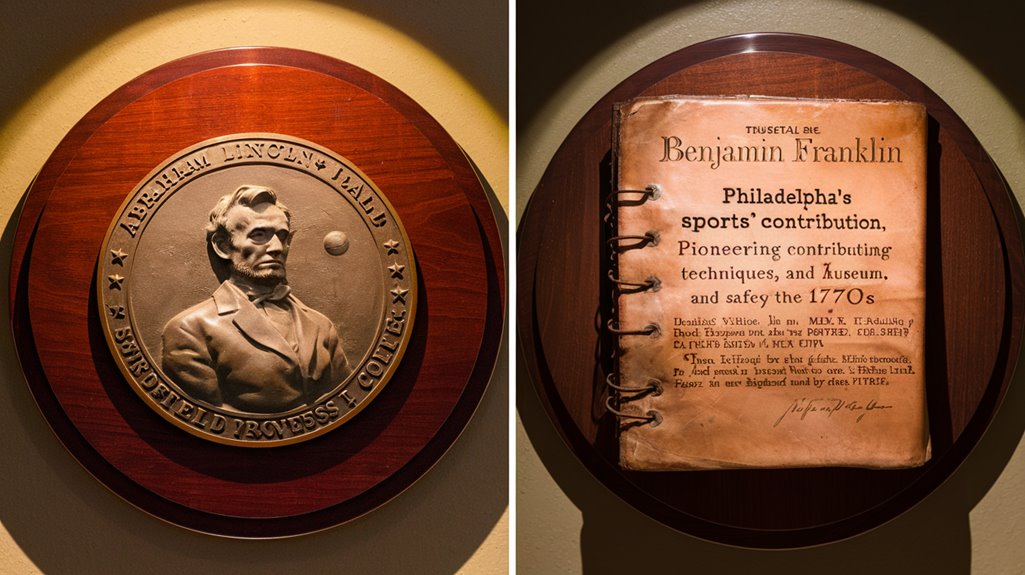
While most Americans know Abraham Lincoln, Benjamin Franklin, and Theodore Roosevelt for their political and intellectual achievements, their remarkable athletic accomplishments often go unnoticed.
You might be surprised to learn that Lincoln dominated the wrestling scene with over 300 victories, while Franklin revolutionized swimming education and invented swim fins. Their dedication to fitness history showcases a fascinating dimension of early American leadership athletics.
An avid swimmer throughout his life, Franklin was a pioneer who championed swimming's health benefits and influenced generations of Americans.
Roosevelt's commitment to physical prowess was equally impressive, as he practiced boxing, judo, and wrestling despite his poor eyesight and asthma. His determination to overcome physical limitations led him to become America's first brown belt in judo while serving as president.
These leaders proved that intellectual brilliance and athletic excellence weren't mutually exclusive. Their induction into various sports halls of fame validates their significant contributions to American athletics, demonstrating how physical fitness shaped both their personal lives and their approaches to leadership.
Lincoln's Wrestling Dynasty: By the Numbers
With a staggering 299 victories out of 300 matches, Abraham Lincoln's wrestling record stands as one of the most impressive in early American sports history.
Catch-as-catch-can wrestling was Lincoln's preferred fighting style as he dominated opponents across Illinois. You might be surprised to learn that our 16th president dominated the sport for 12 years, using wrestling techniques he developed through his work as a rail splitter and farmer.
At 6'4" and 180 pounds, Lincoln built an athletic reputation that followed him throughout his political career. His only recorded loss came against Lorenzo Dow Thompson during the Black Hawk War of 1832. The future president once defended his stepbrother's barge in an impromptu wrestling match at age 19.
His most famous victory was over Jack Armstrong, leader of the Clary's Grove Boys, in 1831. By age 21, Lincoln had already become his county's wrestling champion, and in 1992, the National Wrestling Hall of Fame honored his legacy by inducting him as an "Outstanding American."
The Physical Prowess Behind the Presidential Image
Beyond the dignified portraits and presidential legacy, Abraham Lincoln's physical prowess shaped both his character and public image. You mightn't think of presidential fitness when imagining Lincoln, but his athletic leadership started early in life.
At 6'4" with a lean build, he developed remarkable strength from frontier life, which served him well in over 300 wrestling victories. Before becoming the firm antislavery advocate he was known as, Lincoln's physical abilities earned him widespread respect. Standing tall with long arms and legs, his marfanoid body structure gave him natural advantages in physical contests.
- Rescued from drowning as a child, showing early resilience
- Defended his stepbrother's barge by throwing hijackers overboard
- Dominated local wrestling scenes, losing only once in 12 years
- Used his height and strength to command respect in political circles
- Maintained physical activity even during his presidency, believing it essential for health
His remarkable combination of physical strength and intellectual power helped forge his unique leadership style, making him more than just a statesman.
Franklin's Swimming Legacy and Aquatic Innovation
In contrast to Lincoln's frontier athleticism, Benjamin Franklin made his mark in the water. You'll find his influence on swimming techniques spans centuries, from his invention of hand paddles and swim fins to his innovative training methods using oval palettes.
He learned to swim in Philadelphia's Schuylkill River and later showcased his skills in London's Thames. His remarkable abilities were evident as he swam three miles during his demonstration on the Thames.
Franklin's commitment to aquatic safety shines through his practical teachings. He'd have you practice with an egg exercise to build water confidence and understand buoyancy. On Benjamin Franklin Day, Fort Lauderdale celebrates his lasting contributions to swimming.
His wisdom about water safety remains relevant: if you fall in, let your body find its natural floating position.
It's no wonder the International Swimming Hall of Fame inducted him in 1968, recognizing his enduring impact on swimming education and innovation.
Historical Impact of Leaders Breaking Athletic Boundaries
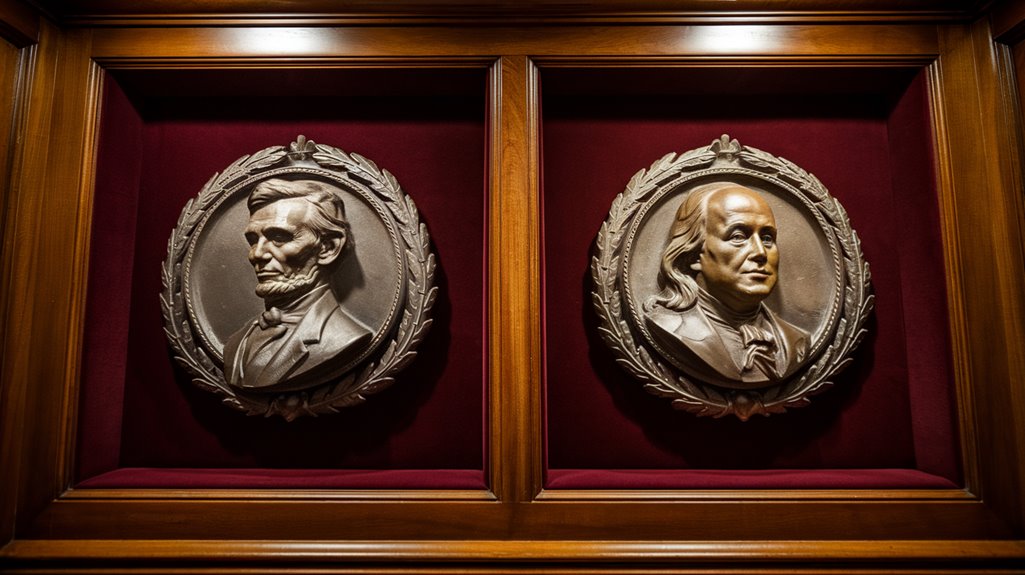
Through the lens of athletic achievement, leaders like Jesse Owens shattered more than just racial barriers – they reshaped society's understanding of human potential.
You'll find that athlete activism has been a powerful force for racial progress, from Owens' triumph at the 1936 Berlin Olympics to Jackie Robinson's breakthrough in baseball. In 1883, Moses Fleetwood Walker made history as baseball's first African-American professional player.
These pioneers didn't just excel in their sports; they became catalysts for social change, inspiring future generations to challenge discrimination. Upon his return, Owens continued his trailblazing path by owning a Negro team and sharing his expertise with major league players.
- Jesse Owens won four gold medals, crushing Hitler's Aryan supremacy myth
- Jackie Robinson transformed baseball and American culture in 1947
- Wilma Rudolph overcame both racial and physical barriers to achieve Olympic glory
- Althea Gibson pioneered integration in both tennis and golf
- Athletes like Jim Brown and Lew Alcindor used their platforms to advocate for justice
Presidential Power Meets Athletic Achievement
While most Americans know Abraham Lincoln and Benjamin Franklin as influential political figures, you might be surprised to learn they've earned places in prominent sports halls of fame.
Growing up on the frontier, Lincoln developed his impressive physical strength through daily hard labor on his family's farms. His presidential athletics legacy includes over 300 wrestling victories, with his impressive 6'4" frame helping him dominate opponents, including notorious gang leader Jack Armstrong. His achievements earned him recognition from the National Wrestling Hall of Fame in 1992.
Franklin's leadership fitness contributions were equally remarkable. His swimming innovations, including hand paddles and flippers, revolutionized aquatic sports, leading to his 1968 induction into the International Swimming Hall of Fame. Like the Presidential Champions Awards program that would follow centuries later, he went beyond personal achievement by advocating for swimming education in Philadelphia schools. Together, these leaders demonstrated that presidential power could extend beyond politics into meaningful athletic accomplishments that continue to inspire today.

